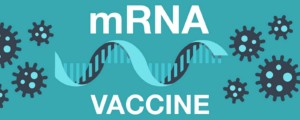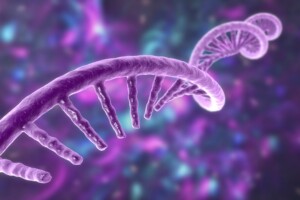
mRNA Development and Manufacturing: CMC Challenges and Solutions
The demand for mRNA-based vaccines and treatments has increased significantly, and the industry has been challenged to not only meet these needs, but also improve existing manufacturing processes and efficiencies. Current challenges with mRNA development and manufacturing include a lack of standardization, supply chain challenges, difficulties scaling the process, and the complexity of the molecule itself. On the positive side, increased interest means that there will be more opportunities to refine best practices over time. In addition, more companies will be entering the space looking to provide solutions to these challenges in the form of fit-for-purpose equipment, improved process platforms, strengthened supply chains, and better understanding of the product itself. To address these requirements, Catalent is building additional GMP capability dedicated to mRNA processes. At the same time, we are continuing to offer integrated development and manufacturing capabilities for plasmid DNA, mRNA, lipid nanoparticles, fill finish, and clinical supply services as well as analytical testing and characterization capabilities for this complex modality.
Jingtao Zhang, Ph.D., Scientific Director at Catalent Biologics, answered some frequently asked questions about the challenges associated with mRNA manufacturing and solutions to these issues.
How is mRNA made?
First, a plasmid DNA is constructed as a template for the in vitro transcription (IVT) step. mRNA is then produced using an in vitro transcription reaction through a DNA templated polymerization of nucleoside triphosphate aided by RNA polymerase. In principle, it is straightforward, because there is no need to wait for cells to be grown, and the yield of the reaction can be high even without optimized processes. In comparison, for biologics obtained through conventional in vitro protein expression, lots of optimization work is necessary.
From a unit operation perspective, industrial production can be divided into IVT reaction, which will use the plasmid DNA as an input, and purification. The IVT reactions are typically short and completed in a few hours. The primary focus of this reaction is to increase product concentration while avoiding a significant buildup of potential impurities and degradation of products. Various IVT reaction processes can be adapted to accommodate the need for RNA capping, cap modification, and polyA addition. Other adaptations can be made, for example adding modified nucleotides (in addition to unmodified nucleotides) to minimize immunogenicity.
The purification stage may include several diverse options depending on the contaminants present. The goal is to recover products while reducing the key impurities of concern, as well as prepare the RNA materials for the next steps. Common contaminants that need to be removed include endotoxins, residual processing enzymes, and residual DNAs and dsRNA. An important parameter that needs to be controlled for mRNA is dsRNA, which can occur during the IVT step when processing at high concentration or for an extended time. Filtration steps such as tangential flow filtration (TFF) will also be used to remove product impurities or concentrate the product.
Why does mRNA development and manufacturing present such unique challenges?
The use of mRNA as a therapeutic modality is in its early stage even though it has been widely commercialized, with millions of doses delivered. Many aspects of its development and manufacture are still undergoing evolution to overcome the challenges outlined earlier.
I will highlight a few key items here:
Lack of standardization
mRNA production has leveraged a diverse range of processes and equipment, mostly by necessity because of what is available in the market. The rapid progression of the technology from research to large scale commercial production has highlighted some of this equipment to be suboptimal. This includes how the IVT reaction should be run, including co-transcriptional or post-transcriptional capping, the type of reactors used, and the purification method. In practice, this difference is not simply due to the difference in molecular sequence but is mostly due to the lack of accepted best practices in the industry. The nature of mRNA means that it can be more standardized than other modalities, and providing that uniformity can further accelerate process development and reduce costs.
Need for Strengthened Supply Chain
mRNA uses unique raw materials and reagents that are not shared with other modalities. Many materials are supplied by a narrow list of vendors that have historically been geared toward supplying research-grade materials. The need for rapid development and production of COVID-19 vaccines put significant strains on supply chains, including these suppliers. It is worth noting that a large fraction of the product cost comes from the raw materials in production, especially for those where intellectual property rights exist. So, the industry needs to improve supply chain robustness and, partially because of that, may be able to lower costs.
Solving Scaling Challenges
While small scale mRNA manufacturing can result in low material recovery, high waste, and high cost of goods, manufacturing at large scale can also be challenging. Some of the methods used at small scale cannot be easily scaled up to larger scale. This is a particular issue for downstream purification methods, where existing resin formats have low binding capacity and need multiple running cycles. Some mRNA processes require solvents in the purification process, which necessitates special equipment or specially designed facilities, including potentially requiring explosion proofing. As a result, the industry needs to evolve over the next few years to meet the growing capacity requirement for this modality.
Large Molecular Size
Even compared with other biologics, it is worth noting that mRNA is a large molecule. For example, a typical 5000 base mRNA will be over 1.6 million Daltons, while a monoclonal antibody is about 1/10th the size at only 150,000 Daltons. As the molecular size increases, so does the degree of complexity in understanding its quality. This is a particular problem for the structure analysis, which the industry is only performing at a primary level. The control strategy around the definition of critical quality attribute (CQA) and critical process parameter (CPP) for mRNA will continue to evolve. There are established ways to test and characterize the molecules and define CQAs. However, scale-up and process transfer from a different site require close coordination with regulatory bodies to ensure expectations are met around how to define comparability and characterization of these complex products. There are common aspects of product quality for all mRNA products, but acceptance criteria and specifications are expected to evolve further with better product understanding. This includes capping analysis, polyA length, dsRNA residual, etc., as they are tied directly to product immunogenicity, safety, and translation.
How is the industry addressing these challenges?
Since the emergency use authorization of mRNA-based vaccines for COVID-19, the industry has accelerated the development of further mRNA-based programs. We are observing an increasing convergence of mRNA processes and the appearance of platform approaches. For example, co-transcriptional capping and affinity-based mRNA purification processes are being adopted more widely. This will be further facilitated by the increasing coverage of these topics in conferences, symposiums, and within industrial consortiums. Several consortia have formed dedicated workstreams on mRNA. This will further help with the sharing of best practices and meeting evolving regulatory expectations.
At the same time, the whole biotech and life science industry is researching ways to further optimize individual unit operations of the mRNA process. This includes process optimization to increase yield and reduce impurity. Considerable progress has been made in the last few years in identifying the origin of dsRNA in IVT and how to control it. We have also seen a re-design of process and equipment more suitable for RNA, such as dedicated bioreactors or continuous process. In addition, further research has identified reagents that can drastically improve product quality, such as better polymerases, better capping agents, and improved resins. The next generation process is expected to be more cost efficient and be more scalable.
The rapid growth of the mRNA market will incentivize the entry of more players that will provide better support for the industry, as well as increase the robustness of supply chains. Multiple CDMOs, including Catalent, are building new CGMP manufacturing capabilities that can better support mRNA development and manufacturing processes. This will help with the growth of the market, adoption of “platform” processes, and adoption of the technology within the industry.
What are Catalent’s capabilities for mRNA development and manufacturing?
Catalent offers integrated development and manufacturing for plasmid DNA, mRNA, and lipid nanoparticles, and provides fill/finish, clinical supply services, analytical testing, and characterization capabilities for this complex modality. It is a one stop service designed to minimize handover between parties and to shorten overall timelines.
Through our global network, Catalent has the capability and experience to develop processes, perform technology transfers, and manufacture a wide range of mRNA molecules including Linear mRNA, Self-amplifying RNA, Circular RNA, and Self-replicating RNA. We are familiar with different IVT reaction processes, setups, and purification requirements for a diverse range of RNA molecules and have deep expertise in each segment.
Catalent has both development and manufacturing capabilities to support the global market. We have the experience to scale up the production of mRNA under CGMP conditions. So far, we have manufactured over 60 mRNA in vitro transcription (IVT) batches. The maximum yield is >90 g for a 20L batch scale.
For more information, please see: https://biologics.catalent.com/specialty/mrna/
or more information, please see: https://biologics.catalent.com/specialty/mrna/
Don’t miss our other mRNA Ask the Expert Sessions:
 mRNA: A New Option for Vaccines and Therapies
mRNA: A New Option for Vaccines and Therapies
In our Ask the Expert session with Wai Lam Ling VP Scientific Advisory at Catalent, she answers questions about mRNA and its use in vaccine and other therapeutics. Our discussion included additional indications, challenges and opportunities to advance current practices.
 The Unique Challenges of Lipid Nanoparticle Development and Manufacturing
The Unique Challenges of Lipid Nanoparticle Development and Manufacturing
In our Ask the Expert with Jingtao Zhang he answers frequently asked questions about the challenges with lipid nanoparticle development and manufacturing. We discussed the difficulties with LNP formulation development and manufacturing including large scale CGMP manufacturing which requires improvements to standardization, scalability, and reproducibility as the industry expands use of mRNA technology to multiple therapeutic applications.
About the Expert
 Jingtao Zhang, Ph.D., Scientific Director, Catalent Biologics
Jingtao Zhang, Ph.D., Scientific Director, Catalent Biologics
Dr. Jingtao Zhang is a Scientific Director, Catalent Biologics. He has more than 16 years of experience in the pharma and CDMO fields, building new business offerings, discovering and developing drug products of small molecule, peptide, oligonucleotide/siRNA, biologics, mRNA, LNPs, and nano-therapeutics. At Catalent, Dr. Zhang serves as a technical advisor for the group and is responsible for developing new technical capabilities and product solutions to solve clients’ pressing pharmaceutical problems.
Prior to Catalent, Dr. Zhang was a principal scientist in the Department of Pharmaceutical Sciences at Merck & Co., Inc. (Kenilworth, New Jersey). His product experience includes early discovery, candidate nomination, early product development, late-stage product development, and commercial investigations, with in-depth knowledge of drug development paradigms and regulatory requirements. His expertise is in formulation development, protein stability, new modalities (mRNA, siRNA, peptides), and complex drug delivery systems such as LNPs. He received his Ph.D. in Chemical Engineering from the University of Wisconsin-Madison. He has authored/co-authored more than 30 articles in peer-reviewed journals and delivered more than 30 presentations at national and international conferences to date.